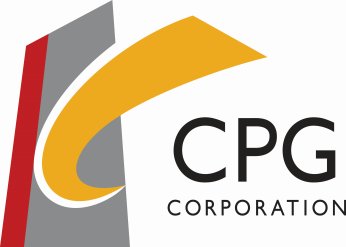Smart Facilities Management for a Safe and Secured Built Environment

As COVID-19 rocked the year 2020, one of its most tangible impacts was how people’s lifestyles had to change. The world of institutional and commercial facilities has also learnt a great deal from the pandemic, it has propelled FM professionals to use this opportunity to relook current systems and meet the changing demands of the built environment.
We observed two important trends that have been strongly underscored by recent events.
(I) Flexibility to Scale FM Operations
During a pandemic, business continuity plans are often implemented on extremely short notices, many a times with durations being uncertain. The use of buildings and facilities may reduce significantly, or completely shut down depending on the severity of a pandemic. At the same time, buildings housing essential services such as data centres, cold storage and healthcare, will continue to be in full operation, if not, scaled up to meet increased demands. Hence, the ability to plan and execute spatial changes and operational protocols is key to responding to the challenges in a pandemic call for greater oversight of building services performance so as to ensure:
- meeting recommended mechanical ventilation requirements during a pandemic, including sufficient air flow changes and better ventilation.
- deep cleaning and disinfection services, especially at touch points with high level of contact when the buildings are occupied and operational
- supervision and control of human traffic entering and exiting facilities, with manpower needed to administer temperature checks
- regular checking of building services and systems (such as plumbing and sanitary services) to ensure smooth and efficient performance
(II) Strategic Resource Planning and Management
Facilities Management (FM) is an integral and essential part of our built environment. FM is a profession that encompasses multiple trades and disciplines to ensure a functional, comfortable, safe, and efficient built environment, through the efficient and effective integration of people, processes, premise/place, and technological adoptions.
In ramping up FM services during a pandemic, additional resources in terms of manpower can become a challenge due to movement restrictions and lockdown scenarios, particularly so if much of the FM operations remain manual intensive. As such, people management has to be carefully planned together with a facility’s FM representatives for the safety of the buildings’ occupants as well as the community. Enhanced security surveillance will also be necessary during periods of lockdown to ensure that the property within the building and those belonging to tenants are secured and safe.
Smart Estates and Smart FM for Increased Safety and Security
Singapore’s built environment sector comprises industries such as construction, real estate (including property transaction services & facilities management), environment services, and security. With support from the Singapore government, many of these industries have already started on Digitalisation programmes and are moving towards the development of Smart Estates and a smart built environment in Singapore. It is about doing better with technology, using it as a means to an end. Through digitalisation, businesses will be able to improve business practices, operating models, resource optimisation, productivity, and experience greater value-add.
With the ongoing development of smart estates, it is natural for FM to respond synchronously in the digitalisation of FM activities. To harness the full potential of smart FM and to achieve a holistic solution that can support data-driven decisions, create and improve outcomes, it is important to consider the aspects of process and people.
(a) Digital Transformation in Facilities Management and Digital Masterplan
To move towards a future of connected facilities management, a Digital Masterplan is useful in providing the conceptual layout for the development of appropriate digital solutions and services that complements the smart estates and digital economy.
The Digital Masterplan is a dynamic long-term planning blueprint that involves key considerations such as
- Service Design - to ensure efficient and effective process design
- Systematic Thinking and Analysis - to create frameworks and methods to tackle problems and pain points methodically
- Business Process Re-engineering - to re-think and re-design processes to bring about drastic improvements
- Digital Transformation Planning - to enable technology advancements to improve overall customer experience.
(b) Unified Remote Digital FM Operations & Command Hub
The Unified Digital FM Operations & Command Hub facilitates FM activities to be carried out remotely. A platform with integrated systems potentially allows multiple building services and systems such as lighting controls, air-conditioning and ventilation (ACMV), energy management, environment monitoring systems and real-time security surveillance to be monitored simultaneously via the digital platform
With the Digital Masterplan, digitalised processes can be delivered via the Unified Digital FM Operations & Command Hub seamlessly. By doing so, processes are simplified with greater compliance, consistency, and informed decision-making to reap the benefits of Smart FM operations. Digital operations and maintenance data can be leveraged across the full lifecycle of building equipment & systems to optimise energy consumption efficiency and, to predict equipment and system failure, thus maximising the assets’ overall performance efficiency and operational effectiveness.
In times of a pandemic where safe distancing measures are implemented and enforced, remote operations monitoring and management of building performance brings about a safer, more secured and sustainable work processes on the job. FM professionals can then plan resources better, with enhanced operability during pandemic scenarios.
(c) Digital Twin of the Estates & Facilities
To support the Unified Remote Digital FM Operations & Command Hub in its processes and functional integration of backend operations, the digital twin of the estates and facilities is an integral aspect to mirror the physical asset virtually.
The digital twin is the virtual representation of a physical object or system across its life-cycle. It uses real-time data and other sources to enable learning, reasoning, and dynamically recalibrating for improved decision making. It does this by providing an extra dimension to traditional building information in 2D or 3D with real-time data extracted from sensors and smart IoT devices. For example, on systems such as ACMV systems or sanitary and plumbing, the digital twin can extract information on conditions of these systems, which then allows FM professionals to make advanced and informed decisions on how to ramp up or make improvements to ensure optimal operations.
(d) Robots and Robotic Process Automation (RPA)
Automation and robotics can help to alleviate manpower shortage by moving away from manual labour, especially for menial and repetitive tasks. For instance, cleaning robots can be deployed on-site to help with cleaning services, especially zones with high contact possibilities. Other uses include inspections of rooftop, green walls, and lift shafts, including programming cleaning bots to communicate with elevator systems to travel between floors in carrying out their cleaning routines. On the whole, RPA can help to automate FM processes to reduce labour intensity, cost, and allow for operations to scale up quickly and effectively.
In conclusion, the future towards connected facilities management is greatly aided by Smart FM. Smart FM deploys technology and collects data, allowing us to review, update and plan future strategies for the greater smart estate environment. The iterative process of getting feedback from user experience also helps to validate the assumptions made by data, with data showing empirical evidence for more improvements. This feedback loop is important for an FM team to keep Smart Estate technologies relevant, and to improve or fine-tune where needed, including a pandemic situation.
This article was authored by:
 | Alan Goh, Deputy Chief Executive Officer, |
 | Kelvin Lim, Vice President, |
 | Vanessa Yang, Assistant Vice President, |
 | Lee Jin-Ting, Principal Architectural Associate, |



